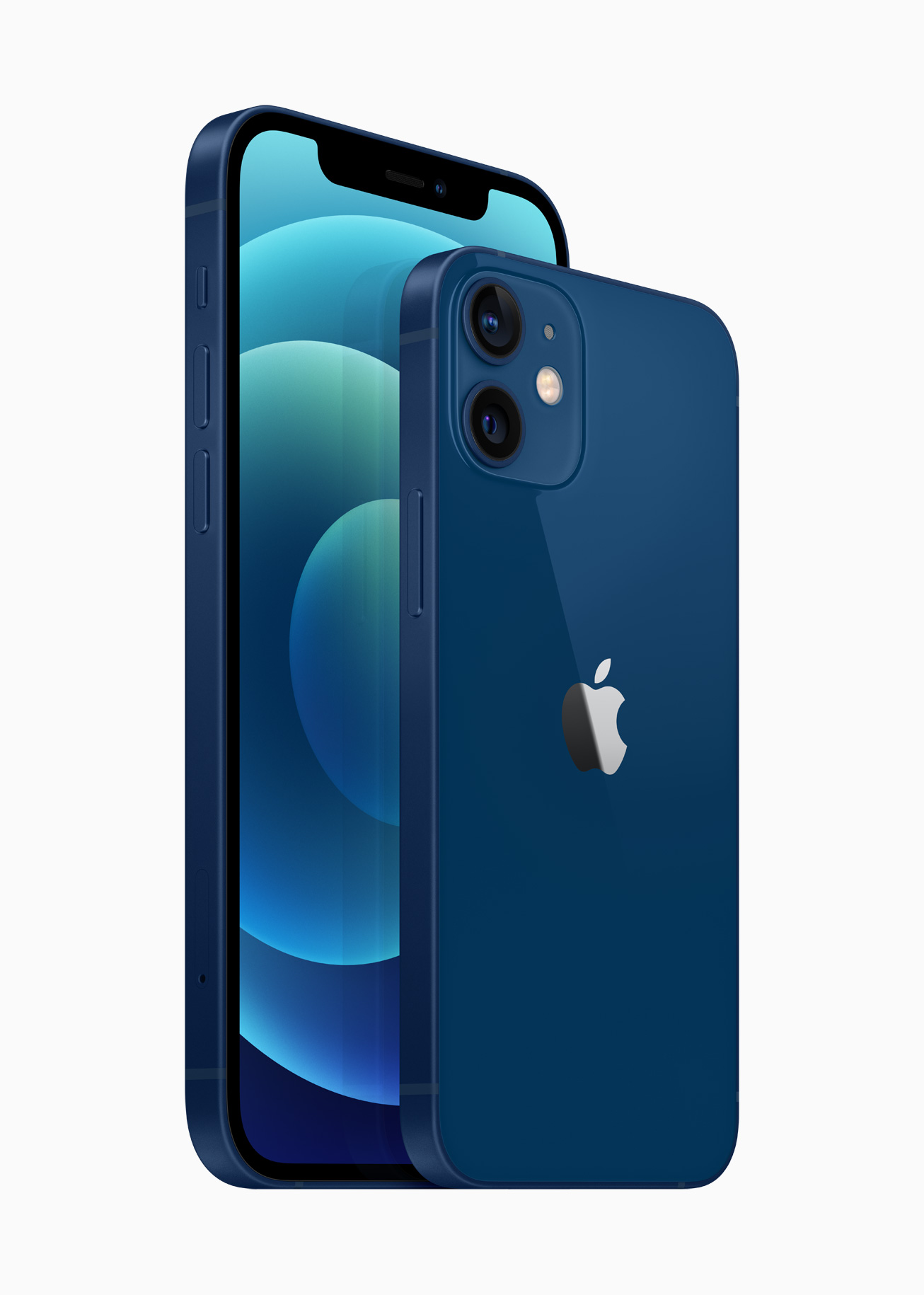Tech companies are getting creative with their event names. At its “Hi, Speed” event on Oct. 13, Apple unveiled the iPhone 12 series.
The iPhone 12 series consists of the iPhone 12 Mini, iPhone 12, iPhone 12 Pro, and the iPhone 12 Pro Max, ordered from the smallest to the biggest. The iPhone 12 Mini offers a more affordable entry point to the premium iPhone ecosystem, filling the gap between the budget iPhone XR and the iPhone 12.
| Model | iPhone 12 Mini | iPhone 12 | iPhone 12 Pro | iPhone 12 Pro Max |
| Processor | Apple A14 Bionic | Apple A14 Bionic | Apple A14 Bionic | Apple A14 Bionic |
| Storage | Up to 256GB | Up to 256GB | Up to 512GB | Up to 512GB |
| Display | 5.4-inch 2340 x 1080 Super Retina XDR | 6.1-inch 2532 x 1170 Super Retina XDR | 6.1-inch 2532 x 1170 Super Retina XDR | 6.7-inch 2778 x 1284 Super Retina XDR |
| Durability | IP68 | IP68 | IP68 | IP68 |
| Camera | Ultra-wide:12MP, f/2.4
Wide: 12MP, f/1.6 |
Ultra-wide:12MP, f/2.4
Wide: 12MP, f/1.6 |
Ultra-wide:12MP, f/2.4
Wide: 12MP, f/1.6 Telephoto: 12MP, f/2.0 |
Ultra-wide:12MP, f/2.4
Wide: 12MP, f/1.6 Telephoto: 12MP, f/2.0 |
| Battery life | Up to 15 hours | Up to 17 hours | Up to 17 hours | Up to 20 hours |
| Price | Starting at CA$979 | Starting at CA$1,129 | Starting at CA$1,399 | Starting at CA$1,549 |
As expected, the new iPhones received a performance uplift through using the A14 Bionic system-on-chip (SoC). First featured in the Apple iPad Air launched in September, the A14 Bionic is built on TSMC’s latest transistors and should be faster and more energy-efficient. The graphics processor is now 50 per cent faster than the predecessor, and the revamped neural engine can perform up to 11 trillion operations per second. Apple achieved this by doubling its cores compared to last gen. All-in-all, expect faster processing in apps, games, and more advanced camera processing.
The iPhone 12s is the first generation of iPhones to feature 5G. Apple claims that the iPhone 12’s 5G supports the most number of 5G bands in a single system. It supports both sub-6GHz frequencies as well as mmWave.

Also, debuting on the iPhone 12 is a LiDAR scanner used to measure depth. Combined with the main cameras, the LiDAR scanner can generate 3D models and capture gestures, enabling developers to create new ways for users to interact with their apps. Unfortunately, the LiDAR scanner only comes with the Pro models.

The iPhone 12’s 12MP main camera got a new brighter lens. The new 7-element f/ 1.6 aperture lets in more light and improves low-light performance by 27 per cent. Besides the main camera, the iPhone 12 Mini and the iPhone 12 have a 12MP f/2.4 ultrawide camera. The iPhone 12 Pro and Pro Max have a third f/ 2.0 telephoto camera and the aforementioned LiDAR scanner.
There are new shooting modes that take advantage of the new high-performance hardware, too. Apple’s Deep Fusion computational photography system stacks multiple images at different exposure levels to create an evenly lit scene. Night mode is now available on all cameras, and a new HDR mode now works better in harsher lights.
All iPhone 12s now feature Apple’s crisp Super Retina XDR OLED display. Previously, all the non-pro iPhones used an LCD display. While it still looked gorgeous, they couldn’t match the OLED display’s contrast and popping colours. With that said, the refresh rate is still capped at 60fps.
The front glass received an upgrade as well. Apple now uses a “Ceramic Shield front” developed with Corning that’s four times more drop-resistant than the iPhone 11. The rest of the phone is crafted from aluminum. As with the generation prior, the iPhone 12s are IP68 weather resistant.
Battery life looks respectable–Apple claims 15 hours for the iPhone 12 Mini, 17 hours for the iPhone 12/iPhone 12 Pro, and 20 hours for the iPhone 12 Pro Max.

What apple giveth, it taketh away. This time, Apple won’t be including a charger with the iPhone 12s. The company said that this is a move towards reaching its carbon-neutral goal by 2030, a very commendable goal. This means that first-time iPhone adopters will need to pay extra for a charger. Apple is, however, making wireless charging easier by adding the MagSafe latch on the back of the phone to snap the charging pad in place. Unsurprisingly, Apple competitors are already jumping on the opportunity to take shots at the lack of a charger. Samsung, Xiaomi, and OnePlus have all released advertisements gloating over their charger in the box.
Moreover, Face ID is still the only biometric sign-in option. In the new age of masks, lacking a fingerprint sensor can be problematic.
The iPhone 12 series is available for pre-order now and will arrive on Oct. 23. The iPhone 12 Mini starts at CA$979, iPhone 12 at CA$1,129, iPhone 12 Pro at CA$1,399, and the iPhone 12 Pro Max at CA$1,549.